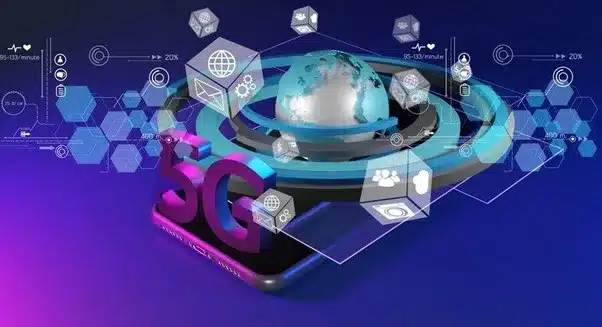Cloud gaming and streaming services like NVIDIA GeForce Now, Xbox Cloud Gaming, and PlayStation Plus Premium are revolutionizing the gaming world. But what makes these services truly practical is low-latency technology, which minimizes the delay between player input and on-screen action. Previously, latency and stuttering made online gaming nearly impossible, but advances in networking, compression, and edge computing have revolutionized gaming. This article explores how low-latency technology is transforming game streaming, the new ideas being developed, and the future of lag-free gaming.
What is low-latency technology?
Low-latency technology refers to systems and methods that help accelerate data transfer. Latency is the time it takes for a player’s input (such as pressing a button) to appear on-screen in a game stream. Traditional streaming often suffers from significant latency because data must travel long distances to and from the server. New technologies like edge computing, adaptive bitrate streaming, and next-generation codecs can reduce latency, enabling real-time gaming. For professional gamers, every millisecond counts, and innovations in low latency make cloud gaming as responsive as PC gaming.
The Importance of Low Latency for Game Streaming
Without low latency, game streaming can feel sluggish and laggy, ruining the experience. In fast-paced games like first-person shooters and fighting games, a delay of even 100 milliseconds can make the difference between winning and losing. Services like Google Stadia initially struggled with input lag, but later platforms have learned from similar missteps. Companies can now provide near-instantaneous feedback by optimizing server locations, reducing packet sizes, and using AI-powered prediction algorithms. This rapid response makes cloud gaming a viable option for anyone who wants to play games on consoles and PCs.
Key Technologies for Improving Game Streaming Speed
Several advanced technologies work together to minimize latency in game streaming. Edge computing brings servers closer to users, accelerating data transfer. Adaptive bitrate streaming technology adjusts video quality in real time based on network conditions, preventing buffering. Advanced video codecs like AV1 and H.265 compress data more effectively, meaning they consume less bandwidth without sacrificing quality. Furthermore, AI-powered input prediction technology anticipates a player’s next move and compensates for even the slightest delay. All these new features work together to deliver a smooth, lag-free gaming experience, comparable to that of local hardware.
The Impact of 5G on Low-Latency Game Streaming
The widespread availability of 5G networks is a major leap forward for cloud gaming. While 4G has a latency of around 50 milliseconds, 5G can deliver latency as low as 1 millisecond when everything works properly. This extremely low latency, combined with increased bandwidth, enables high-quality video streaming, even on mobile devices. Verizon and T-Mobile are already partnering with cloud gaming systems to optimize 5G performance. As infrastructure improves, mobile gamers will be able to enjoy console-like games without having to connect to Wi-Fi.
How Cloud Gaming Platforms Are Leveraging Low-Latency Technology
Top cloud gaming services are investing heavily in low-latency solutions. NVIDIA GeForce Now uses AI to improve network performance and reduce latency. Xbox Cloud Gaming leverages Microsoft’s Azure data centers to improve server responsiveness. Amazon Luna uses AWS’s global infrastructure to reduce latency. Even Sony’s PlayStation Plus Premium has improved its backend for smoother streaming. These platforms demonstrate that, with the right equipment, cloud gaming can be just as responsive as gaming on a high-end PC or console.
The Challenge of Ultra-Low Latency
While things are improving, streaming games with low latency still presents numerous challenges. Network congestion, slow speeds, and hardware issues can still cause lag. Rural areas with poor broadband connections can experience higher latency, making accessing games even more difficult. Furthermore, not all games are suitable for streaming. Some require perfect timing, which even the most advanced technology can’t match. However, ongoing improvements in AI, server allocation, and compression are making these issues more manageable.
The Future of Low-Latency Game Streaming
Low-latency game streaming has a bright future. With the impending arrival of 6G networks, quantum networks, and more powerful AI prediction models, latency will become virtually negligible. Businesses are also exploring hybrid cloud-native gaming, where the device performs part of the processing and streams the remainder. As global internet access improves, cloud gaming could one day replace traditional gaming as the preferred method for most people. The goal? We envision a world where everyone can play AAA games instantly, without the need for downloads or installations, while maintaining a smooth experience.
Conclusion
Low-latency technology has made game streaming possible. It has transformed what was once a slow novelty into a true gaming platform. Thanks to new technologies like edge computing, 5G, AI, and improved codecs, companies can now deliver near-instant response times, rivaling local gaming. However, there are still challenges to overcome, including ensuring stable networks and enabling seamless gaming for everyone, everywhere. However, the rapidly changing landscape means that cloud gaming will become the most popular way to play in the future. For gamers, this means unprecedented freedom: play anytime, anywhere, on any device, without compromise. Low-latency streaming technology continues to evolve and will only improve.
FAQs
1. What does “low latency” mean in the context of game streaming?
For a smooth experience, latency should be under 50 milliseconds. Competitive gamers aim for latency under 20 milliseconds to match the responsiveness of local gameplay.
2. Does the speed of my network connection affect stream length?
Yes, but stability is more important than pure speed. For low-latency streaming, a stable connection of 15 to 25 Mbps with very low jitter is optimal.
3. Can Wi-Fi handle game streaming with the lowest latency?
Wired Ethernet is the best option, but Wi-Fi 6 and 6E offer significantly lower wireless latency than previous standards.
4. Will cloud gaming replace consoles and PCs?
Not yet, but as latency improves, cloud gaming could become the primary gaming method for many people, especially casual gamers.
5. Which cloud service offers the lowest latency?
GeForce Now and Xbox Cloud Gaming currently perform best in optimizing low-latency performance, but results vary by region.




